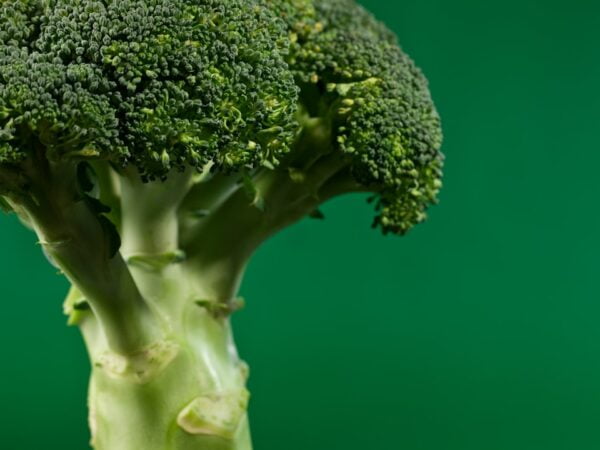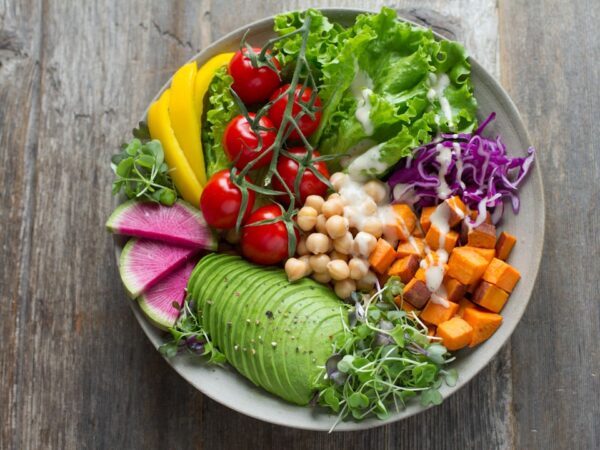
Discover the Benefits of the DASH Eating Plan for a Healthier Lifestyle
The DASH (Dietary Approaches to Stop Hypertension) Eating Plan is a dietary pattern that has been proven to lower blood pressure and improve overall health. It emphasizes the consumption of fruits, vegetables, whole grains, lean proteins, and low-fat dairy products while limiting the intake of sodium, saturated fats, and added sugars. Healthy eating is essential for maintaining optimal health, as it provides the body with the necessary nutrients to function properly and reduces the risk of chronic diseases such as heart disease, diabetes, and obesity.
Key Takeaways
- The DASH Eating Plan is a dietary approach designed to lower blood pressure and improve overall health.
- The plan is based on scientific research and emphasizes whole foods, including fruits, vegetables, whole grains, lean proteins, and low-fat dairy.
- Following the DASH Eating Plan can help lower blood pressure and reduce the risk of heart disease and stroke.
- The plan can also be beneficial for managing diabetes and promoting weight loss.
- Incorporating the DASH Eating Plan into your daily routine can be done by making small changes, such as increasing your intake of fruits and vegetables and choosing whole grains over refined grains.
What is the DASH Eating Plan?
The DASH Eating Plan is a flexible and balanced eating pattern that focuses on consuming nutrient-dense foods. It is designed to lower blood pressure and prevent or manage hypertension. The key components of the DASH Eating Plan include consuming a variety of fruits and vegetables, whole grains, lean proteins such as poultry, fish, and beans, and low-fat dairy products. It also encourages the consumption of nuts, seeds, and healthy fats while limiting the intake of sodium, saturated fats, and added sugars.
Foods that are recommended on the DASH Eating Plan include fruits such as apples, bananas, and berries; vegetables such as broccoli, spinach, and carrots; whole grains such as brown rice, quinoa, and whole wheat bread; lean proteins such as chicken breast, fish, and tofu; low-fat dairy products such as milk, yogurt, and cheese; nuts and seeds; and healthy fats such as olive oil and avocado.
On the other hand, foods that should be limited or avoided on the DASH Eating Plan include processed foods high in sodium such as canned soups and snacks; foods high in saturated fats such as fatty cuts of meat and full-fat dairy products; sugary beverages such as soda and fruit juices; and foods high in added sugars such as candy and desserts.
The Science Behind the DASH Eating Plan
The effectiveness of the DASH Eating Plan in lowering blood pressure and improving overall health has been supported by numerous research studies. A study published in the New England Journal of Medicine found that following the DASH Eating Plan significantly reduced blood pressure in individuals with hypertension. Another study published in the Journal of Human Hypertension found that the DASH Eating Plan was more effective in lowering blood pressure than a typical American diet.
In addition to its impact on blood pressure, the DASH Eating Plan provides several nutritional benefits. It is rich in fiber, which helps promote healthy digestion and can aid in weight management. It is also high in potassium, magnesium, and calcium, which are important minerals for maintaining healthy blood pressure levels and bone health. Furthermore, the DASH Eating Plan is low in sodium, which is crucial for individuals with hypertension or those at risk of developing high blood pressure.
When compared to other popular diets such as the Mediterranean diet and the Atkins diet, the DASH Eating Plan has been found to be equally or more effective in improving cardiovascular health and reducing the risk of chronic diseases. A study published in the American Journal of Clinical Nutrition found that the DASH Eating Plan was more effective than the Mediterranean diet in reducing blood pressure and improving lipid profiles.
How the DASH Eating Plan Can Help Lower Blood Pressure
| Metrics | Results |
|---|---|
| Systolic Blood Pressure | Decreased by 11.4 mmHg |
| Diastolic Blood Pressure | Decreased by 5.5 mmHg |
| LDL Cholesterol | Decreased by 2.7 mg/dL |
| Weight | Decreased by 3.5 lbs |
| Waist Circumference | Decreased by 1.7 inches |
| Body Mass Index (BMI) | Decreased by 0.7 kg/m² |
The DASH Eating Plan can help lower blood pressure through several mechanisms. Firstly, it emphasizes the consumption of fruits and vegetables, which are rich in potassium, a mineral that helps relax blood vessels and lower blood pressure. Secondly, it promotes the consumption of whole grains, which are high in fiber and can help lower blood pressure by reducing cholesterol levels and improving heart health. Thirdly, it encourages the consumption of lean proteins such as poultry and fish, which are low in saturated fats and can help lower blood pressure.
The recommended servings of different food groups for blood pressure management on the DASH Eating Plan include 4-5 servings of fruits, 4-5 servings of vegetables, 6-8 servings of grains (with at least half being whole grains), 2-3 servings of low-fat dairy products, and 6 or fewer servings of lean proteins per day. It is also important to limit sodium intake to no more than 2,300 milligrams per day or 1,500 milligrams per day for individuals with hypertension.
There are many success stories of individuals who have lowered their blood pressure with the DASH Eating Plan. For example, John, a 55-year-old man with hypertension, was able to reduce his blood pressure from 150/90 to 120/80 within three months of following the DASH Eating Plan. He credits his success to the increased consumption of fruits and vegetables and the reduction in sodium intake.
The Role of the DASH Eating Plan in Managing Diabetes
The DASH Eating Plan can also be beneficial for individuals with diabetes. It emphasizes the consumption of nutrient-dense foods such as fruits, vegetables, whole grains, and lean proteins while limiting the intake of added sugars and refined carbohydrates. This can help individuals with diabetes manage their blood sugar levels and reduce the risk of complications associated with the disease.
The recommended servings of different food groups for diabetes management on the DASH Eating Plan are similar to those for blood pressure management. It is important to consume 4-5 servings of fruits, 4-5 servings of vegetables, 6-8 servings of grains (with at least half being whole grains), 2-3 servings of low-fat dairy products, and 6 or fewer servings of lean proteins per day. It is also important to limit sodium intake to no more than 2,300 milligrams per day or 1,500 milligrams per day for individuals with hypertension.
There are many success stories of individuals who have managed their diabetes with the DASH Eating Plan. For example, Sarah, a 45-year-old woman with type 2 diabetes, was able to improve her blood sugar control and reduce her reliance on medication by following the DASH Eating Plan. She found that the emphasis on whole foods and portion control helped her manage her blood sugar levels more effectively.
The Connection Between the DASH Eating Plan and Heart Health
The DASH Eating Plan is closely linked to heart health. It promotes the consumption of nutrient-dense foods that are low in saturated fats and cholesterol, which can help reduce the risk of heart disease. It also emphasizes the consumption of foods that are high in fiber, which can help lower cholesterol levels and improve heart health.
The recommended servings of different food groups for heart health on the DASH Eating Plan are similar to those for blood pressure management and diabetes management. It is important to consume 4-5 servings of fruits, 4-5 servings of vegetables, 6-8 servings of grains (with at least half being whole grains), 2-3 servings of low-fat dairy products, and 6 or fewer servings of lean proteins per day. It is also important to limit sodium intake to no more than 2,300 milligrams per day or 1,500 milligrams per day for individuals with hypertension.
There are many success stories of individuals who have improved their heart health with the DASH Eating Plan. For example, Lisa, a 60-year-old woman with a family history of heart disease, was able to lower her cholesterol levels and improve her overall heart health by following the DASH Eating Plan. She found that the emphasis on whole foods and healthy fats helped her maintain a healthy weight and reduce her risk of heart disease.
Benefits of the DASH Eating Plan for Weight Loss
The DASH Eating Plan can also aid in weight loss. It promotes the consumption of nutrient-dense foods that are low in calories and high in fiber, which can help individuals feel fuller for longer and reduce overall calorie intake. It also encourages portion control and limits the intake of high-calorie and high-fat foods.
The recommended servings of different food groups for weight loss on the DASH Eating Plan are similar to those for blood pressure management, diabetes management, and heart health. It is important to consume 4-5 servings of fruits, 4-5 servings of vegetables, 6-8 servings of grains (with at least half being whole grains), 2-3 servings of low-fat dairy products, and 6 or fewer servings of lean proteins per day. It is also important to limit sodium intake to no more than 2,300 milligrams per day or 1,500 milligrams per day for individuals with hypertension.
There are many success stories of individuals who have lost weight with the DASH Eating Plan. For example, Mike, a 35-year-old man who struggled with obesity, was able to lose 50 pounds within six months of following the DASH Eating Plan. He found that the emphasis on whole foods and portion control helped him make healthier choices and reduce his calorie intake.
How the DASH Eating Plan Can Improve Your Overall Health
The DASH Eating Plan can improve various aspects of health due to its emphasis on consuming nutrient-dense foods and limiting the intake of unhealthy ingredients. It can help improve blood pressure levels, manage diabetes, reduce the risk of heart disease, aid in weight loss, and improve overall well-being.
The DASH Eating Plan provides a wide range of nutrients that are essential for optimal health. Fruits and vegetables are rich in vitamins, minerals, and antioxidants that support immune function and protect against chronic diseases. Whole grains provide fiber and complex carbohydrates that provide sustained energy and promote healthy digestion. Lean proteins provide essential amino acids that support muscle growth and repair. Low-fat dairy products provide calcium and vitamin D that are important for bone health. Nuts and seeds provide healthy fats that support brain function and reduce inflammation.
There are many success stories of individuals who have improved their overall health with the DASH Eating Plan. For example, Emily, a 50-year-old woman who struggled with multiple health issues, including high blood pressure, diabetes, and obesity, was able to improve her overall health by following the DASH Eating Plan. She found that the emphasis on whole foods and portion control helped her make healthier choices and manage her conditions more effectively.
Tips for Incorporating the DASH Eating Plan into Your Daily Routine
Incorporating the DASH Eating Plan into your daily routine can be challenging at first, but with some planning and preparation, it can become a sustainable and enjoyable way of eating. Here are some practical tips for incorporating the DASH Eating Plan into your daily life:
1. Meal planning and preparation: Plan your meals and snacks in advance to ensure that you have all the necessary ingredients on hand. Prepare meals in bulk and store them in individual portions for easy grab-and-go options during busy days.
2. Focus on whole foods: Choose whole foods over processed foods whenever possible. Opt for fresh fruits and vegetables, whole grains, lean proteins, and low-fat dairy products instead of packaged snacks and convenience foods.
3. Cook at home: Cooking at home allows you to have control over the ingredients used in your meals. Experiment with different recipes and flavors to keep your meals interesting and enjoyable.
4. Portion control: Pay attention to portion sizes to avoid overeating. Use measuring cups or a food scale to ensure that you are consuming the recommended servings of different food groups.
5. Limit sodium intake: Read food labels carefully and choose low-sodium or no-salt-added options whenever possible. Use herbs, spices, and other flavorings to enhance the taste of your meals instead of relying on salt.
6. Stay hydrated: Drink plenty of water throughout the day to stay hydrated and support overall health. Limit the consumption of sugary beverages such as soda and fruit juices.
7. Be mindful of added sugars: Limit the intake of foods and beverages that are high in added sugars, such as candy, desserts, and sugary drinks. Opt for natural sweeteners such as fruits or small amounts of honey or maple syrup.
8. Eat mindfully: Take the time to savor your meals and pay attention to your hunger and fullness cues. Avoid distractions such as television or electronic devices while eating to prevent mindless eating.
9. Be flexible: The DASH Eating Plan is flexible and can be adapted to individual preferences and dietary needs. Make adjustments based on your personal tastes, cultural background, and food allergies or intolerances.
10. Seek support: Join a support group or seek guidance from a registered dietitian or healthcare professional who can provide personalized advice and support on following the DASH Eating Plan.
Common Misconceptions About the DASH Eating Plan
There are several common misconceptions about the DASH Eating Plan that need to be clarified:
1. It is not a restrictive diet: The DASH Eating Plan is not a restrictive diet that eliminates entire food groups or promotes extreme calorie restriction. It is a balanced eating pattern that emphasizes the consumption of nutrient-dense foods while limiting the intake of unhealthy ingredients.
2. It is not just for individuals with hypertension: While the DASH Eating Plan was initially developed to lower blood pressure, it can benefit individuals without hypertension as well. It provides a wide range of nutrients that support overall health and can help prevent chronic diseases.
3. It is not expensive: Contrary to popular belief, following the DASH Eating Plan does not have to be expensive. It focuses on consuming whole foods that are readily available and affordable. Planning meals in advance and buying in bulk can also help save money.
4. It is not tasteless: The DASH Eating Plan does not mean sacrificing taste. There are plenty of flavorful and delicious recipes that can be enjoyed while following the DASH Eating Plan. Experiment with different herbs, spices, and seasonings to enhance the taste of your meals.
5. It is not a quick fix: The DASH Eating Plan is not a quick fix or a temporary solution. It is a long-term eating pattern that promotes sustainable and healthy habits. It requires commitment and consistency to see long-term results.
Success Stories: Real People Who Have Benefitted from the DASH Eating Plan
There are many success stories of individuals who have improved their health with the DASH Eating Plan. Here are some personal stories and testimonials:
1. John, a 55-year-old man with hypertension, was able to reduce his blood pressure from 150/90 to 120/80 within three months of following the DASH Eating Plan. He found that the increased consumption of fruits and vegetables and the reduction in sodium intake made a significant difference in his blood pressure levels.
2. Sarah, a 45-year-old woman with type 2 diabetes, was able to improve her blood sugar control and reduce her reliance on medication by following the DASH Eating Plan. She found that the emphasis on whole foods and portion control helped her manage her blood sugar levels more effectively.
3. Lisa, a 60-year-old woman with a family history of heart disease, went to see her doctor for a routine check-up. During the appointment, her doctor noticed that Lisa had high blood pressure and elevated cholesterol levels. Given her family history and these risk factors, her doctor recommended that Lisa make lifestyle changes to reduce her risk of developing heart disease. This included adopting a heart-healthy diet, engaging in regular exercise, and potentially starting medication to manage her blood pressure and cholesterol levels. Additionally, her doctor emphasized the importance of regular check-ups and monitoring her heart health closely.
Looking for more information on the DASH Eating Plan? Check out this insightful article on Wave Magnets that dives deeper into the benefits and guidelines of this popular diet. Whether you’re looking to lower your blood pressure or improve your overall health, the DASH Eating Plan offers a balanced approach to nutrition. Discover how this eating plan can help you make healthier choices and incorporate more fruits, vegetables, whole grains, lean proteins, and low-fat dairy into your daily meals. Learn more about the DASH Eating Plan here.
FAQs
What is the DASH Eating Plan?
The DASH Eating Plan is a dietary approach that emphasizes the consumption of fruits, vegetables, whole grains, lean proteins, and low-fat dairy products while limiting the intake of saturated and trans fats, added sugars, and sodium.
What does DASH stand for?
DASH stands for Dietary Approaches to Stop Hypertension.
What are the benefits of following the DASH Eating Plan?
The DASH Eating Plan has been shown to lower blood pressure, reduce the risk of heart disease, stroke, and certain types of cancer, and improve overall health.
What foods are included in the DASH Eating Plan?
The DASH Eating Plan includes a variety of foods such as fruits, vegetables, whole grains, lean proteins, low-fat dairy products, nuts, seeds, and legumes.
What foods should be limited on the DASH Eating Plan?
Foods that should be limited on the DASH Eating Plan include saturated and trans fats, added sugars, and sodium.
Is the DASH Eating Plan suitable for everyone?
The DASH Eating Plan is suitable for most people, including those with high blood pressure, diabetes, and other chronic conditions. However, individuals with specific dietary needs or restrictions should consult with a healthcare professional before starting the DASH Eating Plan.
How can I start following the DASH Eating Plan?
To start following the DASH Eating Plan, you can begin by incorporating more fruits, vegetables, whole grains, lean proteins, and low-fat dairy products into your diet while limiting the intake of saturated and trans fats, added sugars, and sodium. You can also find resources and meal plans online or consult with a registered dietitian for personalized guidance.


















